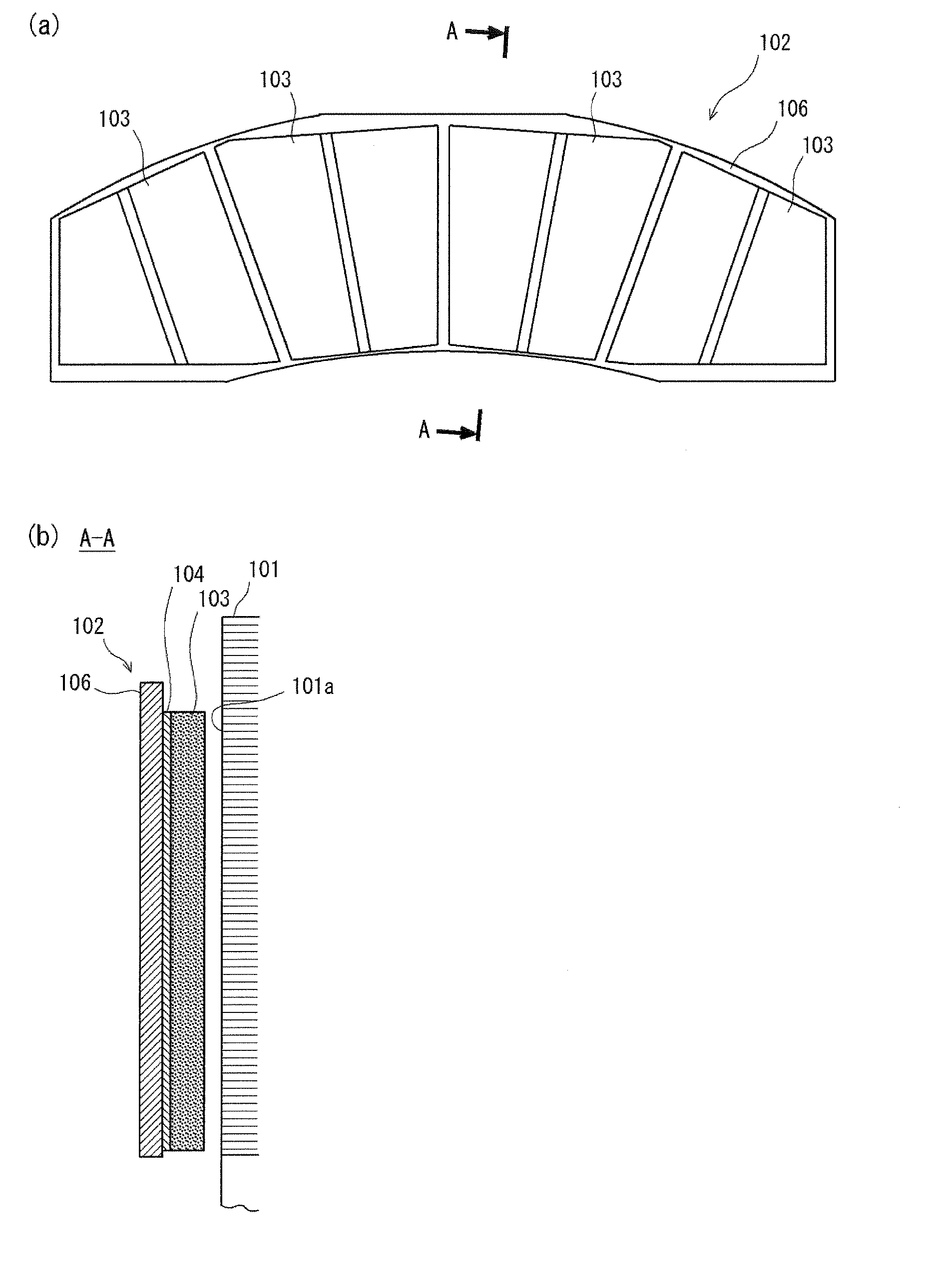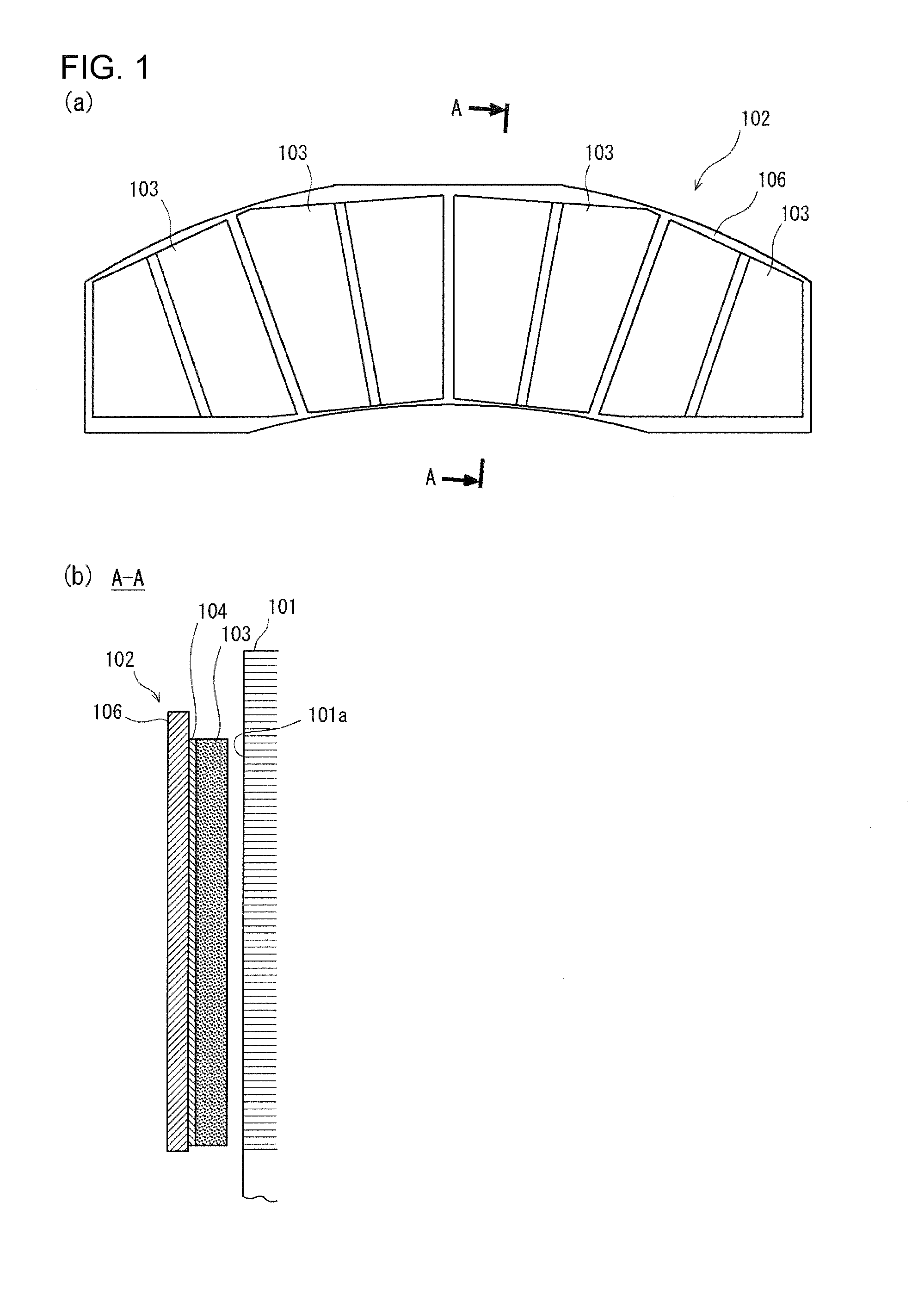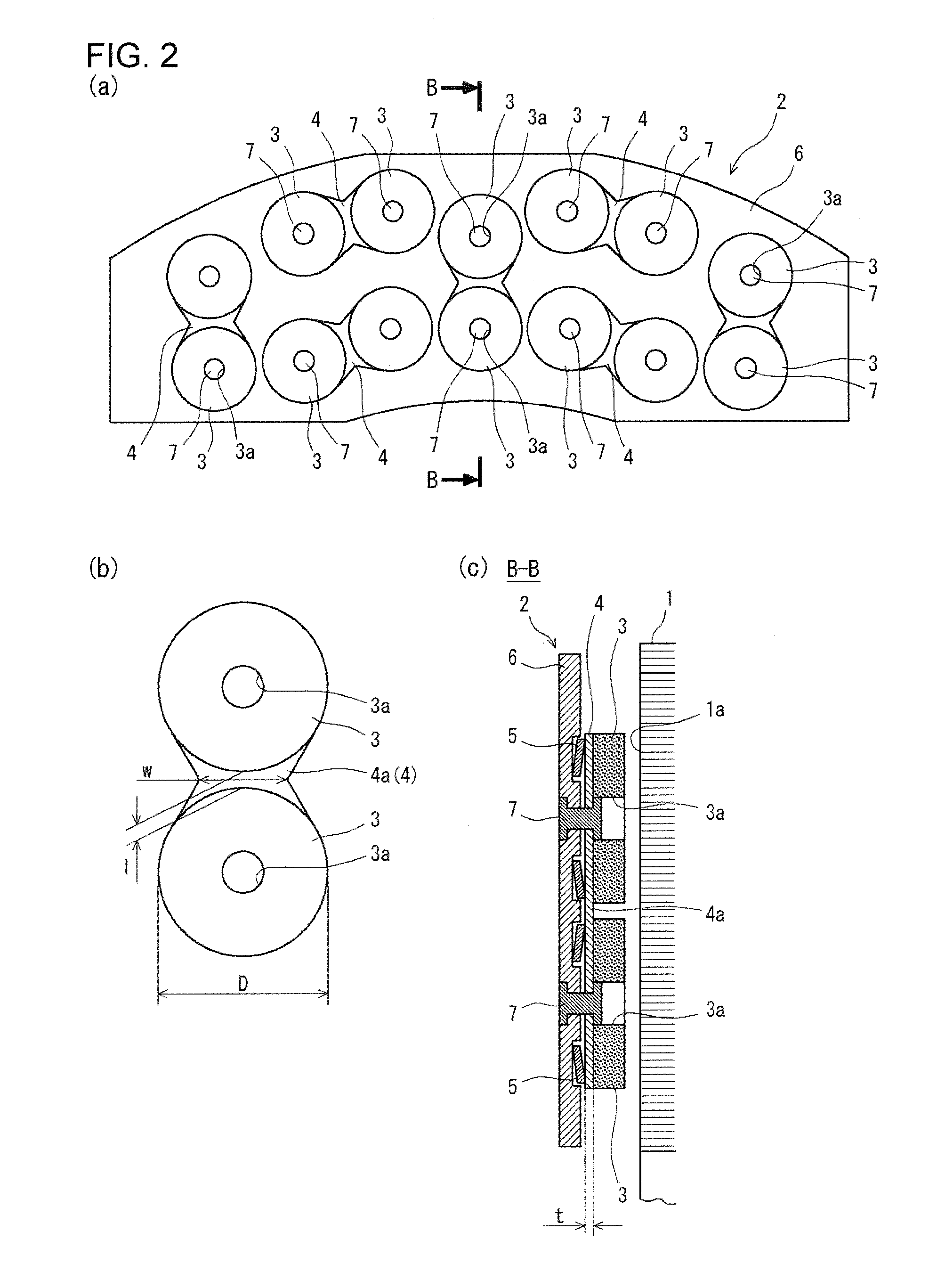Brake lining for railway vehicles and disc brake equipped with the same
a technology for disc brakes and brake linings, which is applied in the direction of friction linings, mechanical devices, transportation and packaging, etc., can solve the problems of increasing the frictional surface temperature the brake disc that come into contact with each other, increasing the wear of the brake lining, and reducing the durability of the disc brake, so as to achieve the effect of stable coefficient of friction and enhanced durability and reliability
- Summary
- Abstract
- Description
- Claims
- Application Information
AI Technical Summary
Benefits of technology
Problems solved by technology
Method used
Image
Examples
examples
[0054]To verify the advantageous effects of the present invention, Finite Element Method (FEM) analysis and brake tests were conducted as described below.
[Summary of the Analysis and Tests]
[0055]An FEM analysis was conducted to evaluate the uniformity of contact pressure between a brake lining and a brake disc during braking operation. In the analysis, the brake lining and the brake disc were modeled as elastic bodies, and a load corresponding to the pressing force by the brake caliper was applied from the back side of the brake lining. In this analysis, the loads acting on the individual friction members were evaluated.
[0056]Brake tests were conducted primarily to evaluate the stability of the coefficient of friction between the brake disc and the brake lining during braking operation. In the tests, a wheel to which the brake disc was mounted was caused to rotate at its position, and the brake lining mounted to the brake caliper was pressed against the brake disc for braking. In th...
PUM
 Login to View More
Login to View More Abstract
Description
Claims
Application Information
 Login to View More
Login to View More - R&D
- Intellectual Property
- Life Sciences
- Materials
- Tech Scout
- Unparalleled Data Quality
- Higher Quality Content
- 60% Fewer Hallucinations
Browse by: Latest US Patents, China's latest patents, Technical Efficacy Thesaurus, Application Domain, Technology Topic, Popular Technical Reports.
© 2025 PatSnap. All rights reserved.Legal|Privacy policy|Modern Slavery Act Transparency Statement|Sitemap|About US| Contact US: help@patsnap.com



